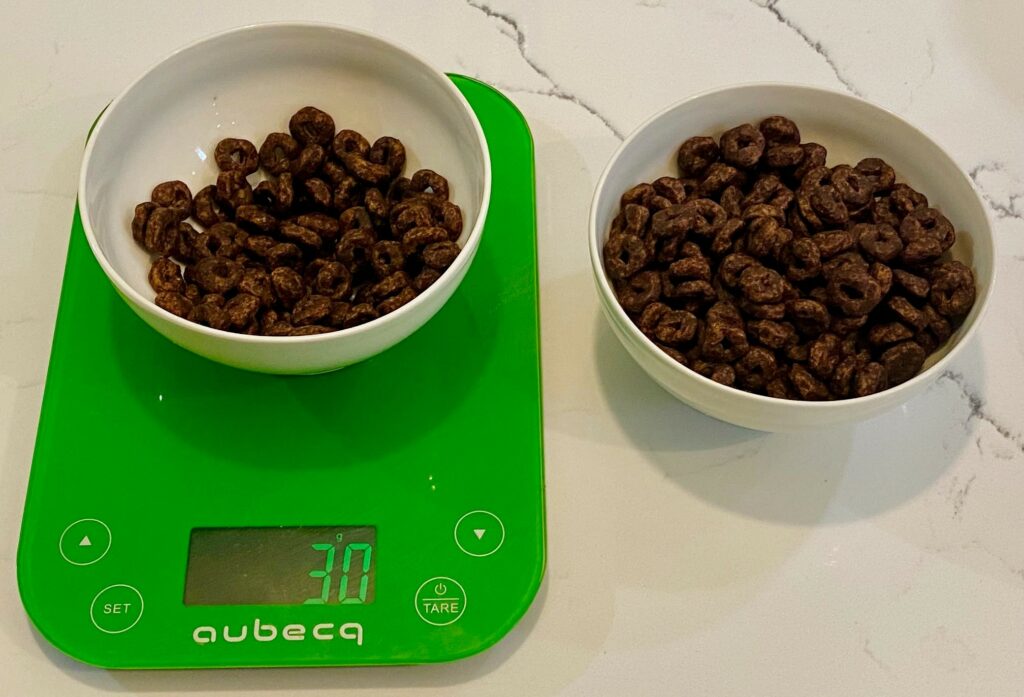Have you ever weighted 30g of breakfast cereals? If you have, you probably noticed this was much less than you thought. Nevertheless, 30g is the common serving size indicated on cereal packages, with the corresponding nutritional values. I think serving sizes are often useless and potentially problematic for some individuals. Here is why:
- Individual variation in energy needs: one of the main drawbacks of serving sizes is that they don’t account for the significant variation in energy needs among individuals. People have unique metabolic rates, activity levels, and overall health status, which can result in vastly different calorie requirements. Using a standard serving size may lead some individuals to consume too little or too much energy for their specific needs.
- Psychological impact: serving sizes can have a psychological impact on people. When a serving size appears small or insufficient, it may trigger feelings of guilt or inadequacy, potentially leading individuals to eat more than they need to compensate for what they perceive as a « small portion. » This can contribute to overeating and disordered eating behaviors.
- Unrealistic portions: in some cases, serving sizes can be unrealistically small. They may not align with practical eating habits or cultural norms, which can make it challenging for people to follow dietary guidelines. Unrealistic portion sizes can lead to frustration and discourage individuals from adopting healthier eating habits.
- Lack of precision: serving sizes are often rounded numbers that may not accurately reflect the specific nutritional content of a food item. This lack of accuracy can be problematic for individuals who are closely monitoring their nutrient intake, such as those with specific dietary requirements or medical conditions.
- Nutrient density matters: serving sizes often don’t provide information about the nutrient density of a food. Nutrient-dense foods, even in larger portions, can be part of a healthy diet, whereas less nutritious foods in small servings may not provide the same health benefits. Focusing on the overall quality of the diet is more valuable than solely relying on serving sizes.
- Flexibility and adaptability: people’s dietary needs change over time due to factors like age, activity level, and health status. A rigid adherence to serving sizes may not allow for the flexibility required to adapt to these changes and maintain a balanced and sustainable diet.
- Focus on overall energy intake: a more balanced approach to nutrition emphasizes the importance of focusing on overall energy intake rather than fixating on serving sizes. Instead of counting calories or portion sizes, individuals can benefit from developing a balanced and mindful eating pattern. This approach encourages listening to one’s hunger and fullness cues, making nutritious choices, and considering the broader context of their dietary choices.

Real life situation.
On the left the 30g portion size indicated on the cereal pack, on the right what my children usually have. This is around 60 to 70g.
Instead of fixating on serving sizes, it’s often more helpful to focus on the overall energy intake, prioritise nutrient-dense foods, and adopt a mindful and flexible approach to your diet that suits your unique needs and goals.